Olympia
Immersive Augmented Reality Experience , October 2021
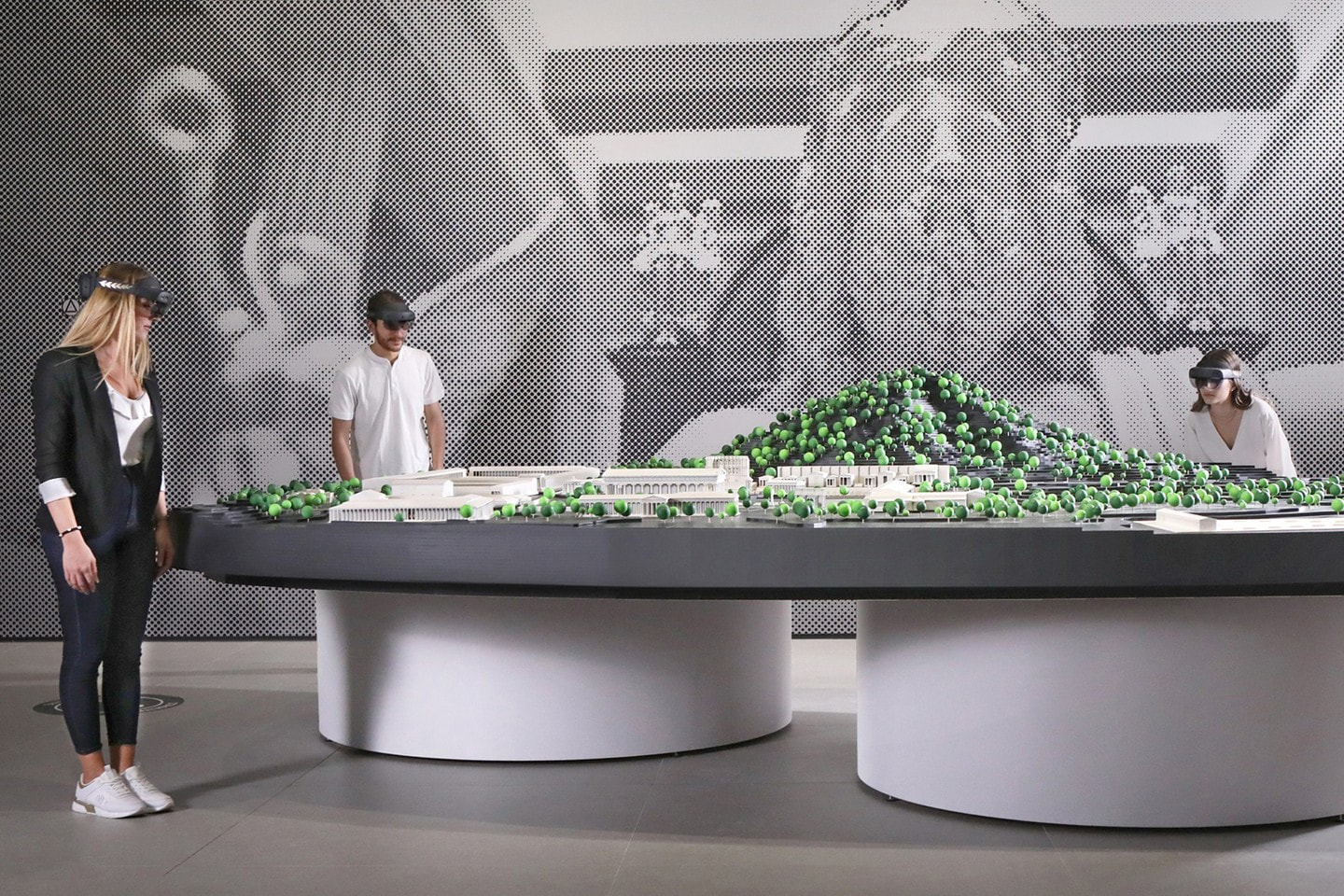
Client
Contributions
- Experience Strategy
- Technical Direction
- Prototyping
- Software Development
- Systems Design
- On-site Installation
Media Coverage
The Ancient Olympia: Common Grounds HoloLens 2 exhibition is an immersive mixed reality experience that invites people to walk through the digitally preserved site of Ancient Olympia. Visitors are transported back to 173 CE, where they are surrounded by the sights, sounds, and virtual monuments of the ancient Olympic Games. Commissioned by Microsoft, the exhibition opened at the Athens Olympic Museum in Greece on October 11, 2021.
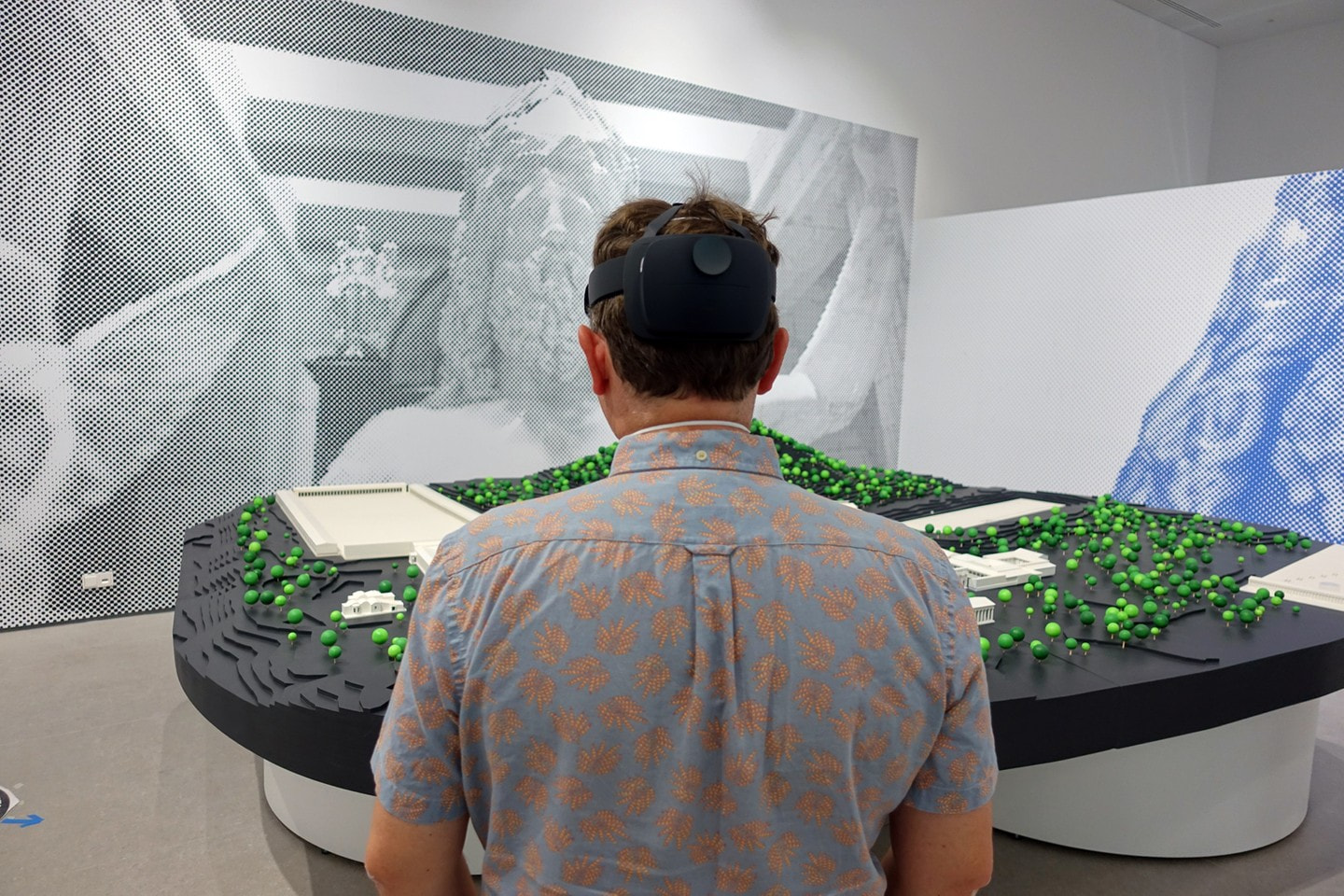
Starting the HoloLens experience at the Athens Olympic Museum
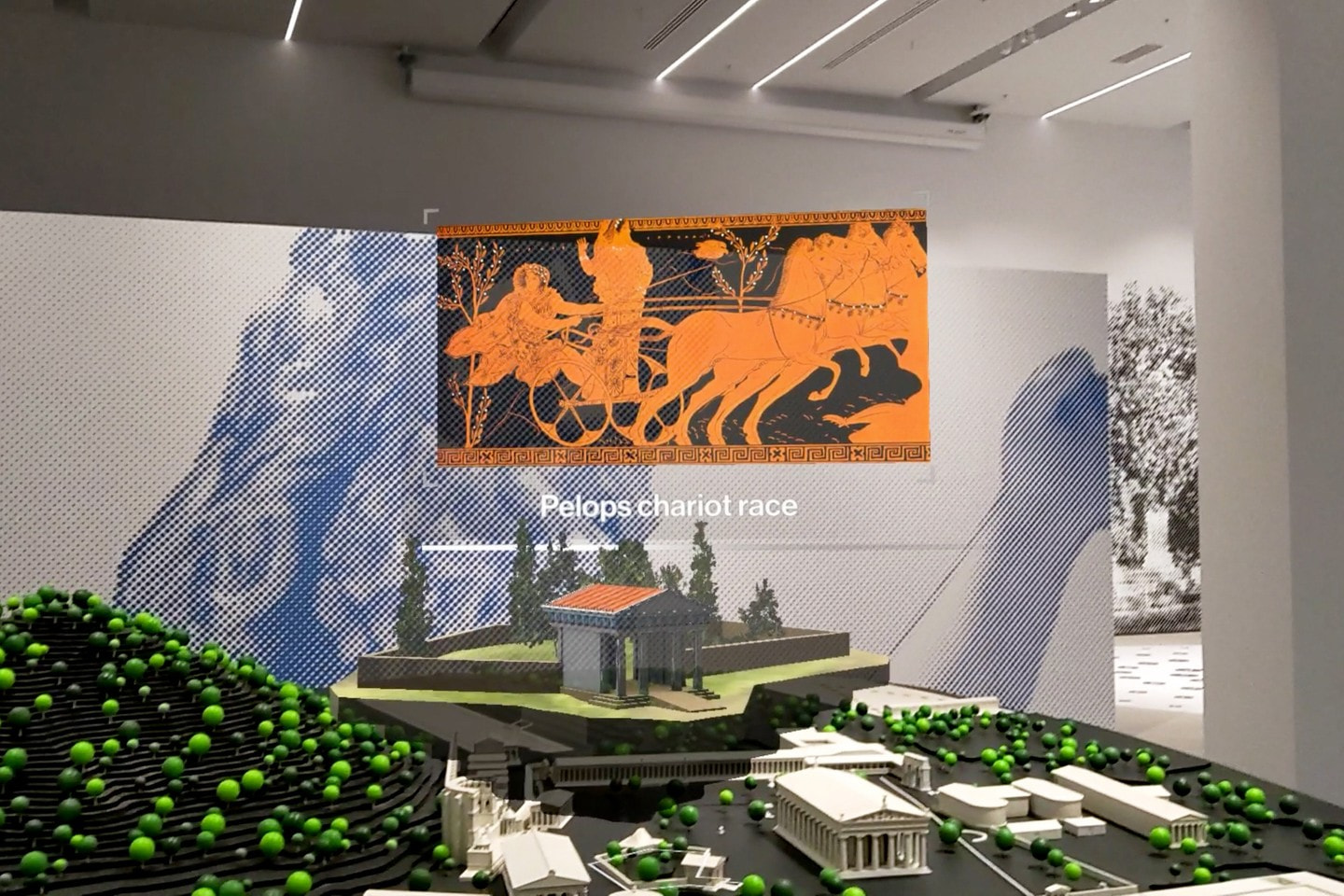
The Pelopion monument in the HoloLens experience
The immersive agency Ada hired Glowbox to develop the experience as part of Microsoft’s AI for Cultural Heritage Program. The experience demonstrates the HoloLens 2’s capabilities by placing 27 historically accurate 3D models of monuments, restored from present day ruins by Iconem, on a model table of the ancient city. Visitors wearing HoloLens headsets walk to five different stops around the table and see the city brought to life with sound, animation, and interaction.
The tour culminates in a visit to the Temple of Zeus, where guests examine the temple in the palm of their hand before being immersed in a life-size 360-degree rendering of the building’s interior. As the experience comes to a close, visitors see the model table covered by a photogrammetry scan of the ruins of Olympia as they stand today.
Collaborating with Ada on the experience design and Invisible Thread on the content and visual effects, we developed the HoloLens experience at our Portland, OR studio with the aid of a locally built model table that stood in for the table that would be installed in Athens. This allowed them to accurately design the holographic experience in a way that minimized the time needed to install the project on-site in Greece.
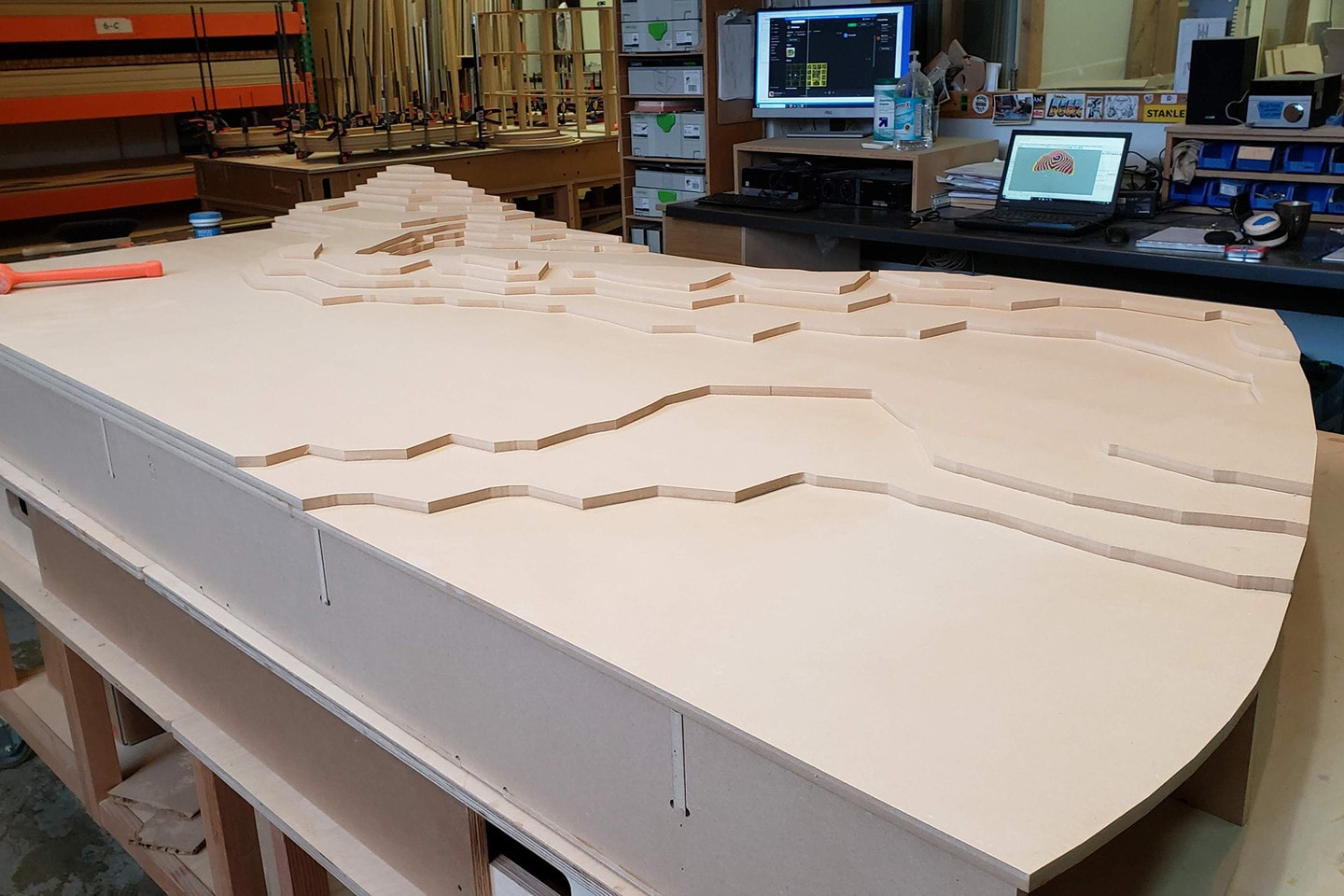
Fabrication of the table model to be used during development in Portland, OR
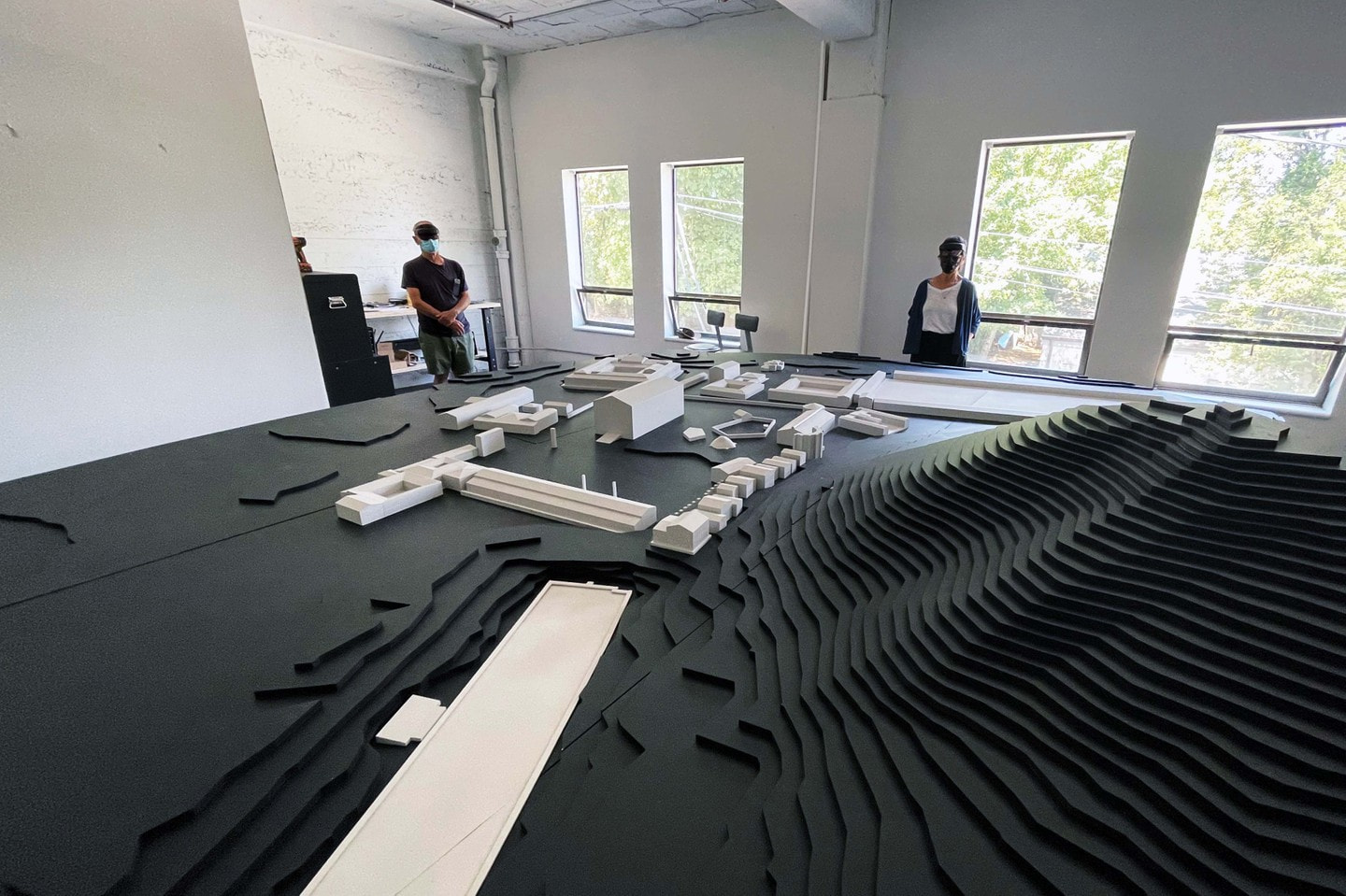
User testing at Glowbox's studio in Portland
A challenge in creating the HoloLens experience was keeping all 27 holographic monuments and their associated animations aligned to their physical counterparts on the model table as visitors moved through the experience. To account for differences that arose between the model table used in the production process and the table that was ultimately installed in the exhibit, we created a 3D scan of the table on-site at the museum. We used this scan to make fine adjustments to the placement of the monuments in Unity so that the holograms visitors see in the headset neatly line up with the physical monument models.
We used Azure Spatial Anchors to “lock” the virtual content to the physical content. Alignment is maintained between device reboots and shared across all Hololenses in the exhibit. Using Azure Spatial Anchors means calibration only needs to be run once for all devices to be calibrated.
Given that the exhibition will be open to the public continuously for two years, the museum staff needs to be able to re-align holograms with the table should they drift over time. To this end, we created a web browser interface to allow the calibration of the experience using a HoloLens and a tablet computer.
To reduce the amount of contact docents have with the headsets that guests wear, the experience is controlled via this same browser interface. Once a headset is fitted on a guest, the docent uses a tablet to select the guest’s desired language and accessibility options, start the experience, and skip to different sections of the experience as needed.
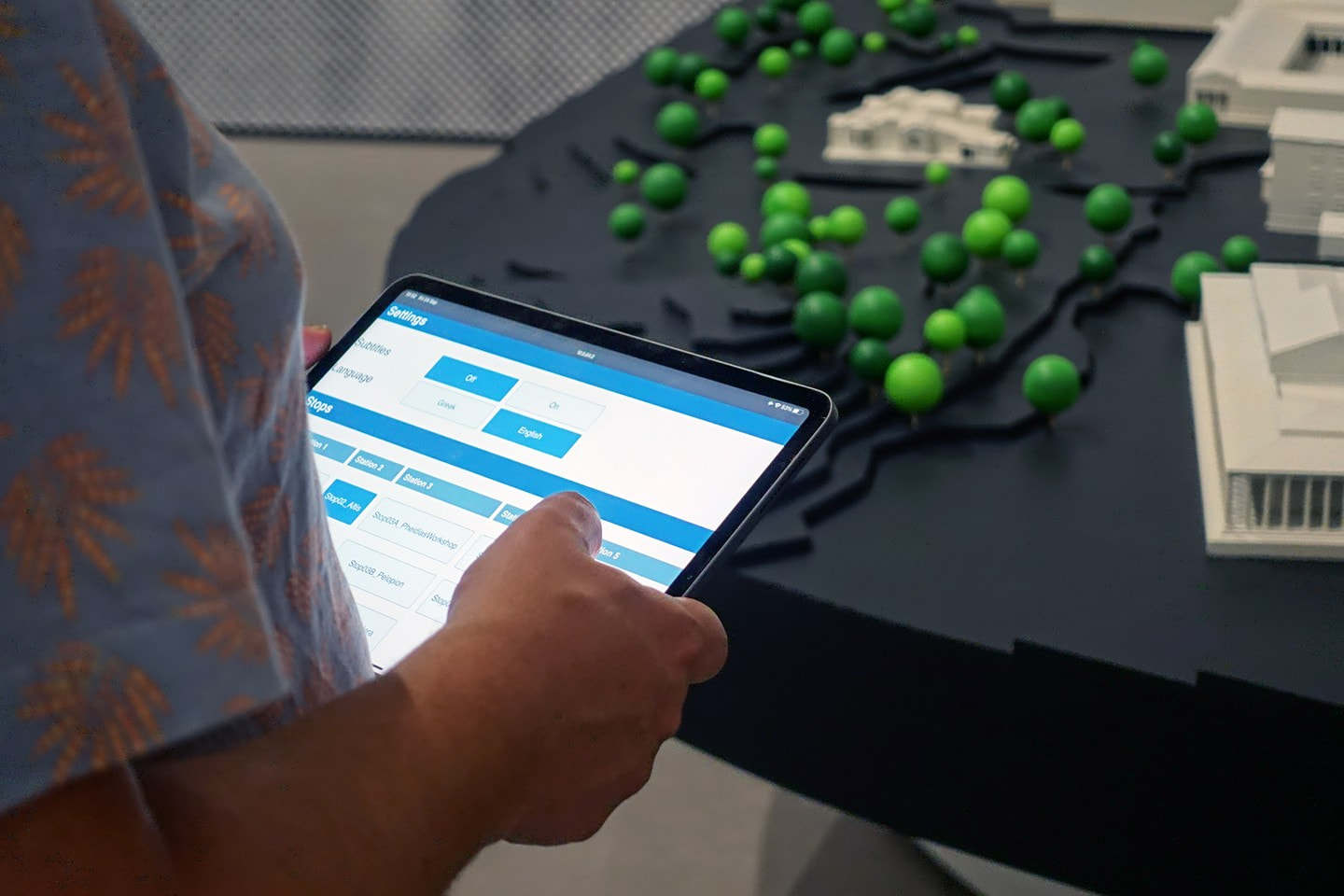
The docent control tablet interface
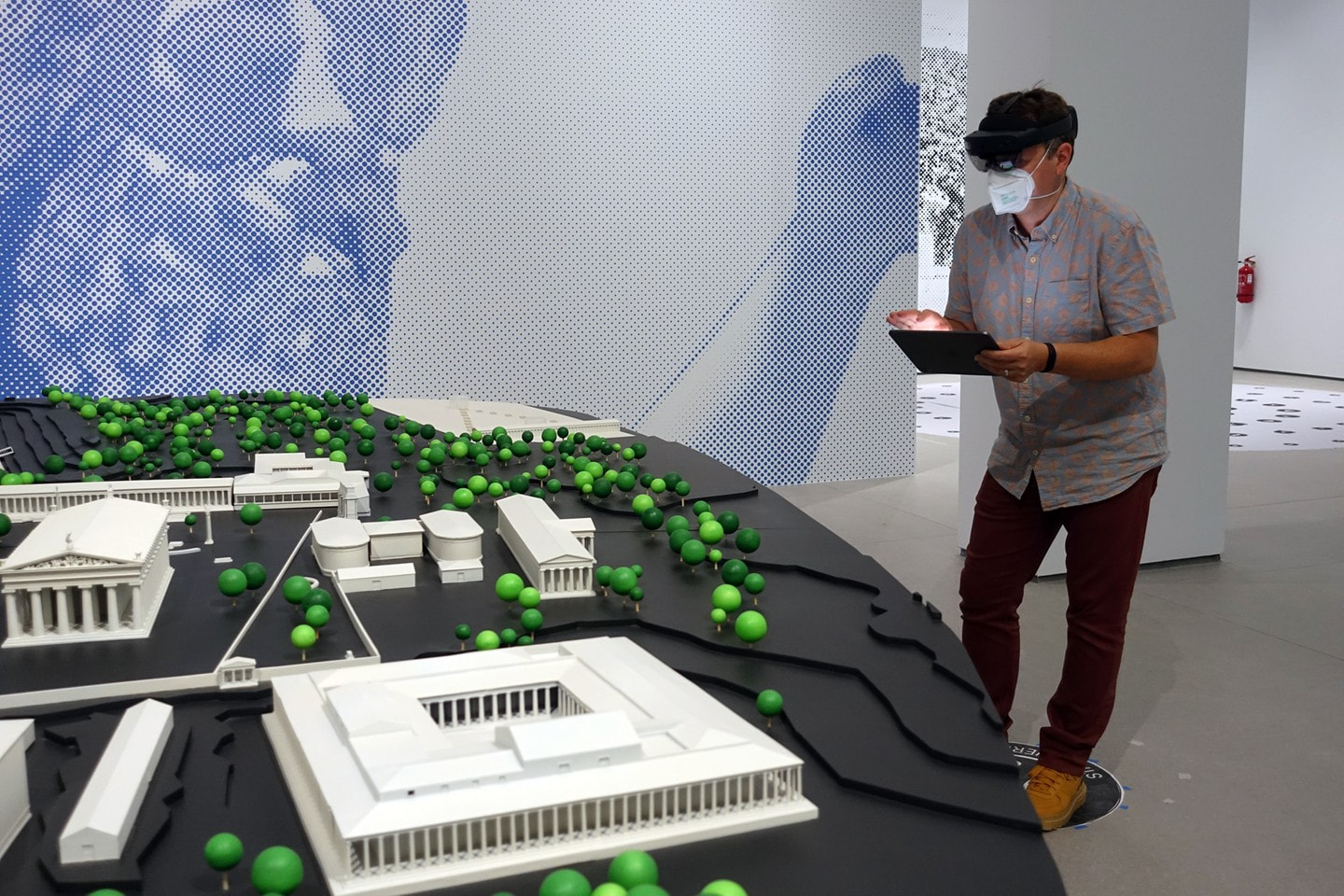
Calibrating the experience at the Athens Olympic Museum
The majority of the project, including the HoloLens content and the docent control app, is hosted on an on-site server PC. Rich 3D content, visual effects, and audio are downloaded to the HoloLens devices from the server as needed throughout the experience, enabling fast iteration during design and development. This architecture also expedites updates and troubleshooting during the exhibit’s two-year lifespan, as content needs only to be updated on the server rather than on each individual HoloLens.
Ancient Olympia: Common Grounds Ancient Olympia: Common Grounds is open to the Athens Olympic Museum’s visitors through October 2023. If you can’t make it to Athens, you can explore a selection of monuments from the project via an augmented reality mobile app or in full 3D with your web browser. You can also learn more about the exhibit and the effort to digitally preserve Ancient Olympia for future generations on the Microsoft In Culture and the Athens Olympic Museum websites.

The Temple of Zeus in the palm of your hand
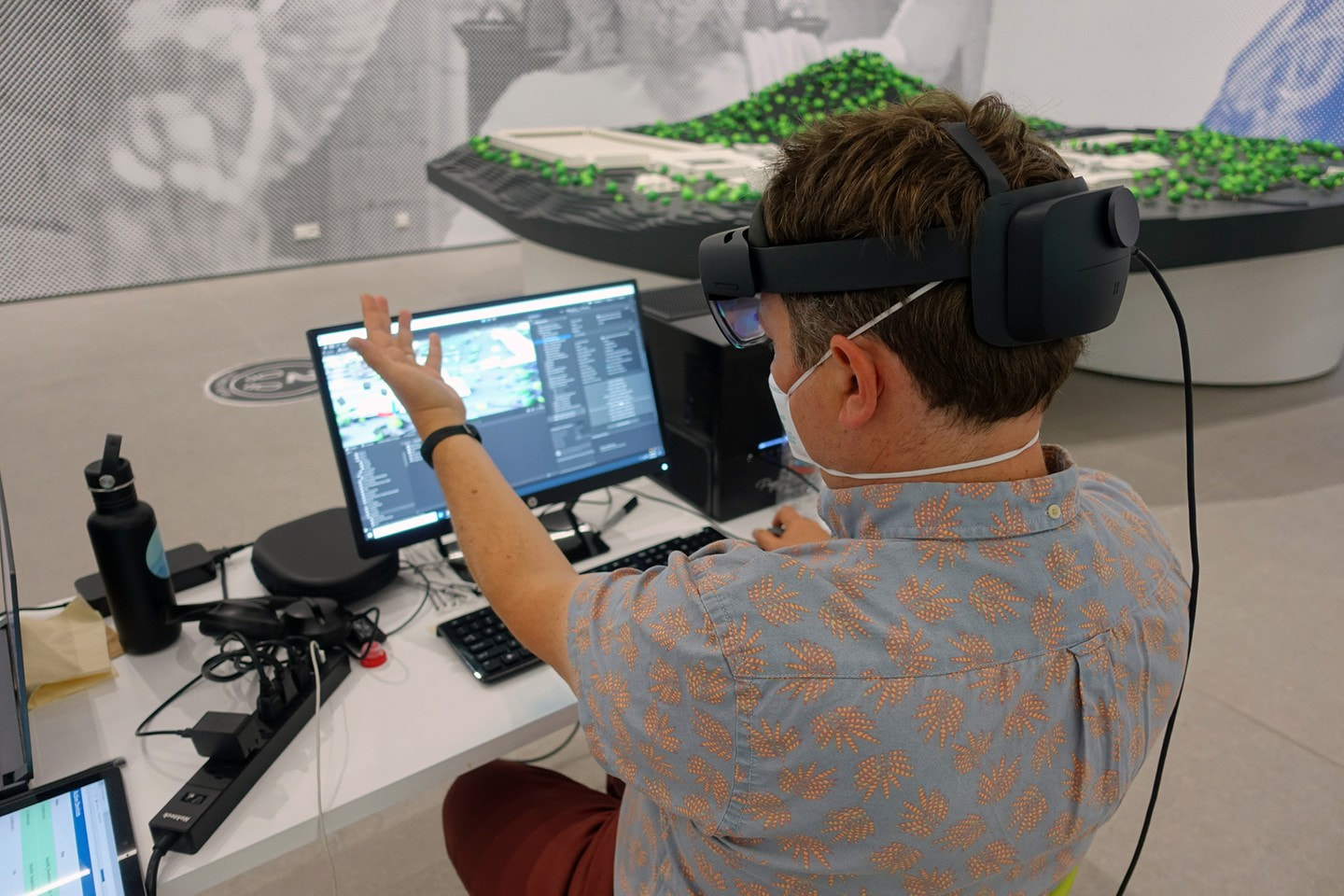
Testing HoloLens hand tracking on-site
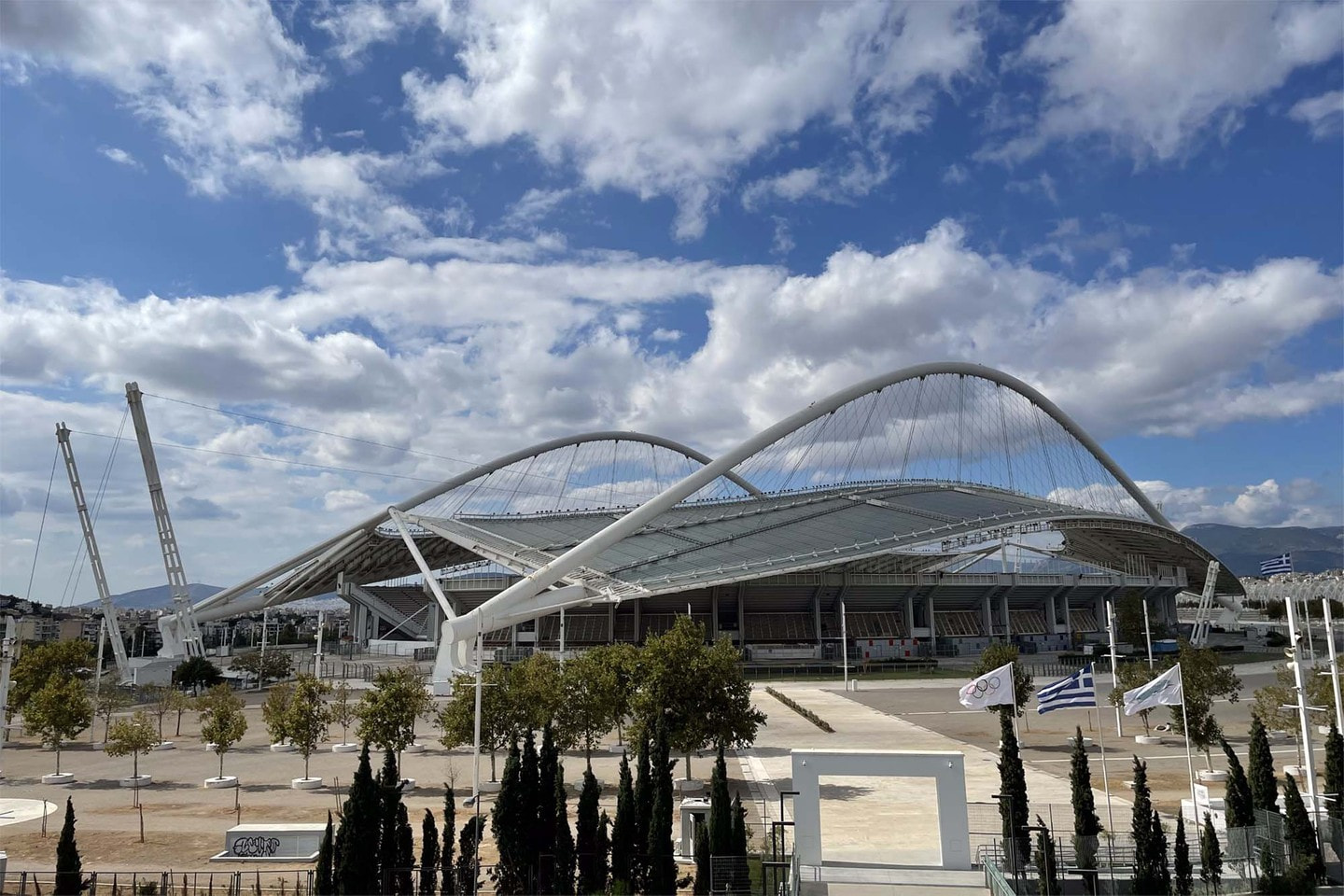
The Olympic Stadium as seen from the exhibition venue

Photogrammetry of the ruins of Ancient Olympia superimposed over the model table
Tools & Technologies
- HoloLens 2
- Unity
- Mixed Reality Toolkit
- Azure Spatial Anchors
- Node.js
- MongoDB